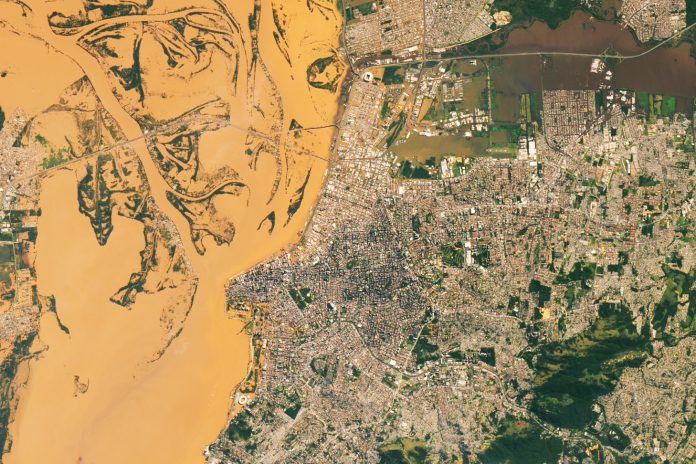The end of the U.S. government’s international aid agency, announced by Donald Trump in early February, will not only have impacts on global humanitarian aid but also on the environment.
A study conducted by the team of ((o))eco on an official U.S. government platform shows that in 2024, the United States Agency for International Development (USAID) allocated $14.7 million to environmental projects in Brazil, equivalent to R$84 million at the current exchange rate.
According to information from ForeignAssistance.gov, the main website of the U.S. government for publicizing foreign assistance data, as of December 19, 2024, USAID had allocated R$141.6 million (24.7 million dollars) to Brazil in 43 projects.
The figure ranks Brazil 13th in the regional ranking of countries that received the most resources from the U.S. international aid agency in 2024. The first position was held by Haiti, which received 420 million dollars.
Environment at the top of the list
Of the 10 highest amounts sent, six correspond to projects directly linked to the environment, such as “Tapajós for Life”, which allocated R$23 million (USD 4 million) to conservation and sustainable use of protected areas in the Tapajós River basin in the Brazilian Amazon.
Also on the list is the alliance between the U.S. and Brazil for forest fire control. According to the U.S. government’s website, the program received R$19 million in 2024 (USD$3.3 million) for technical training and training of firefighters who work on the front lines of fire control.
The Fire Management and Fire Prevention Program, implemented since 2021 by Ibama in partnership with the U.S. Forest Service (USFS), offered at least 51 courses and training sessions between 2021 and 2023, training over 3,000 people, mainly indigenous, who now serve as firefighters in their territories. The program also included exchange of experiences and technical studies.
In a statement sent to ((o))eco, Ibama stated that the suspension of USAID activities “does not directly impact the fight against forest fires in Brazil, as prevention and combat within national territory are funded by the federal budget, covering firefighter salaries, equipment acquisition, aircraft hiring, among other expenses.”
However, the agency highlighted that the interruption of these activities may have consequences for cooperating parties, “as climate change affects all countries, as in the case of forest fires, for which everyone should be better prepared.”

In addition to the preservation activities in the Tapajós basin and firefighting, in 2024 USAID funded the following projects, as described on the ForeignAssistance.gov website:
- Integrated Indigenous Land Management Project – Co-designed activity with the USAID/Brazil environmental office aimed at strengthening the management capacity of ten indigenous organizations in the states of Roraima and Amazonas. Project value: R$15 million (USD 2.6 million).
- Alliance of Indigenous Peoples for the Forests of the Eastern Amazon: Conservation, Protection, and Restoration Activity – Initiative to support protection, sustainable management, biodiversity conservation, and restoration of natural resources in indigenous lands in the Amazon. Project value: R$11 million (USD$1.9 million).
- O Assobio – Call for socio-biodiversity activity, aiming to promote public-private agreements that attract climate financing for the Amazon biome in the state of Mato Grosso in the central-west region of the country. Project value: R$8.2 million (USD 1.4 million).
- Biodiversity – Project focused on combating illegal exploitation of natural resources and controlling invasive species. Project value: R$7.7 million (USD 1.3 million).
- Natural Resources and Biodiversity – Project to combat illegal and corrupt exploitation of natural resources, in addition to controlling invasive species. Programs under this element should integrate with the Agriculture Area within the Economic Growth framework and the Conflict Mitigation and Reconciliation Area within the Peace and Security Objective, as applicable and appropriate. Project value: R$64.8 thousand (USD $11.3 thousand).
In addition to activities directly related to the USAID’s environmental agenda, the agency also allocated other resources with direct or indirect connection to the environmental and climate crisis in Brazil.
According to ForeignAssistance.gov, an additional R$30.3 million (USD $5.3 million) were allocated to Brazil under the concept of “Emergency Response,” including humanitarian aid for the cities most affected by floods in Rio Grande do Sul in the southern region of the country in early 2024.
Between 2020 and 2024, USAID allocated a total of R$880 million (USD $153.83 million) to Brazil, of which R$294.7 million (USD $51.52 million) were exclusively for environmental protection projects.
Impacts worldwide
The potential end of USAID will not only affect environmental programs in Brazil. The U.S. agency also contributed to the creation of Song Thanh National Park in Vietnam, restored coral reefs in the Seychelles, financed the creation of marine protected areas in Papua New Guinea, and was instrumental in establishing the national parks system in Gabon and implementing a tiger conservation program in Bangladesh.
USAID also provided support for the restoration of wildlife and habitat in Gorongosa National Park in Mozambique, after a 16-year civil war that decimated almost all large mammals in the country.
According to ForeignAssistance.gov, in 2024, USAID allocated R$3.7 billion (USD $648 million) to 310 environmental protection actions or programs in 62 countries.
Until the suspension of USAID activities, ordered by Donald Trump in early February due to alleged – and unproven – irregularities, the agency managed a budget of approximately USD $30 billion, allocated to humanitarian aid and development assistance in around 120 countries.
The closure of USAID and Trump’s proposal to merge the agency with the State Department still need to be evaluated by the U.S. Congress. However, the funds have been frozen since February 4.
This article was originally published in Portuguese by ((0))eco.






